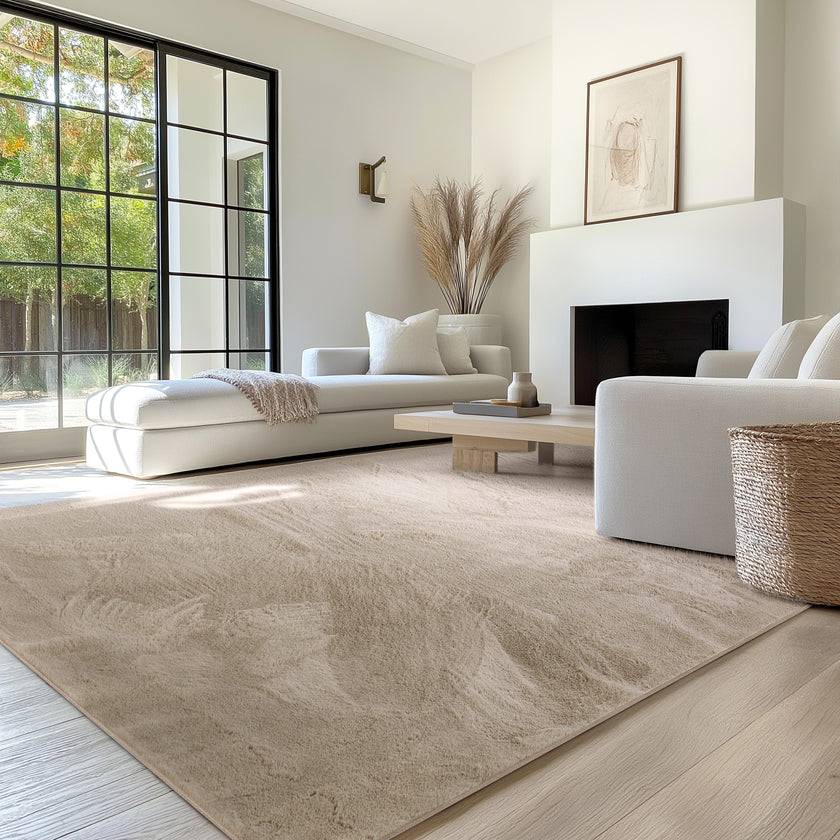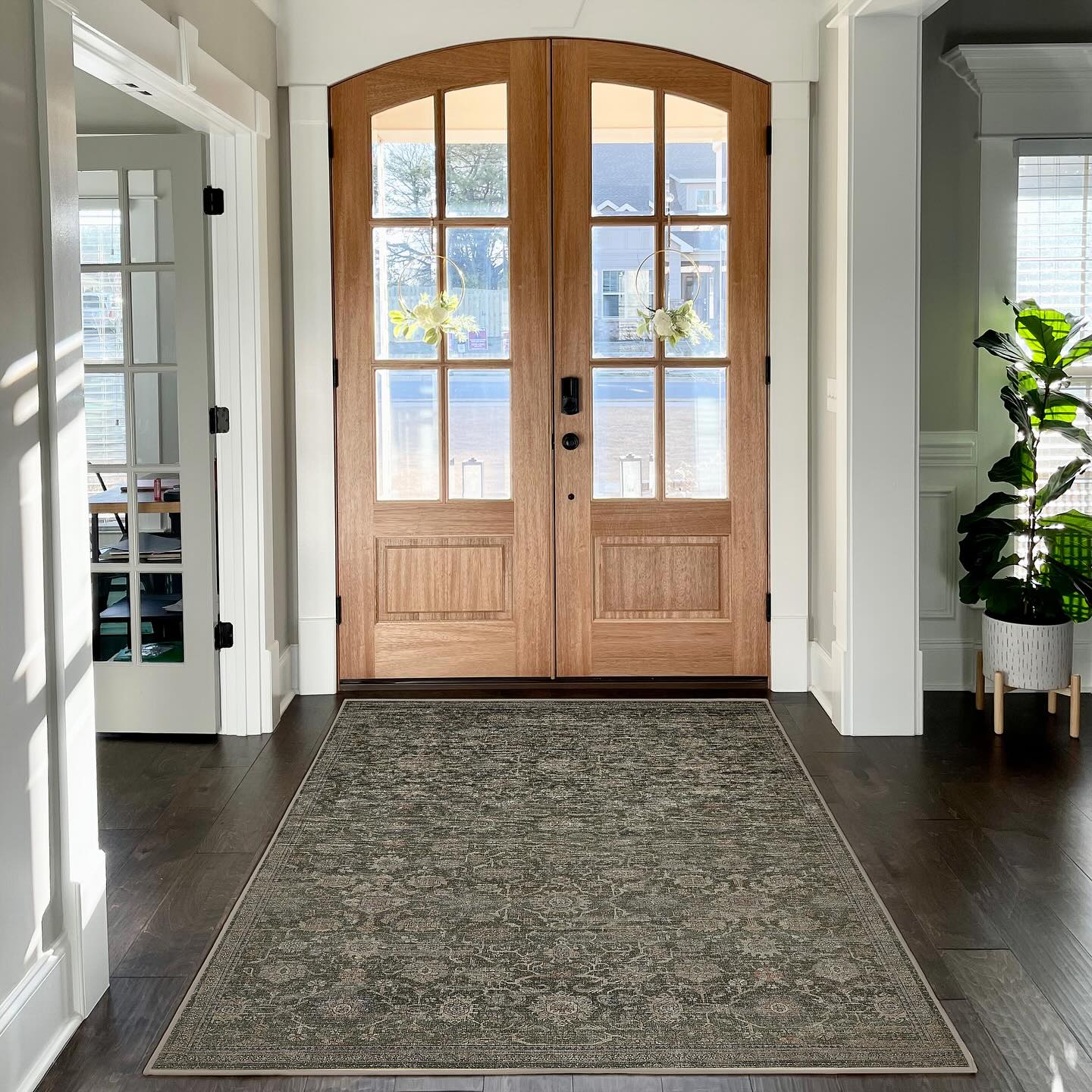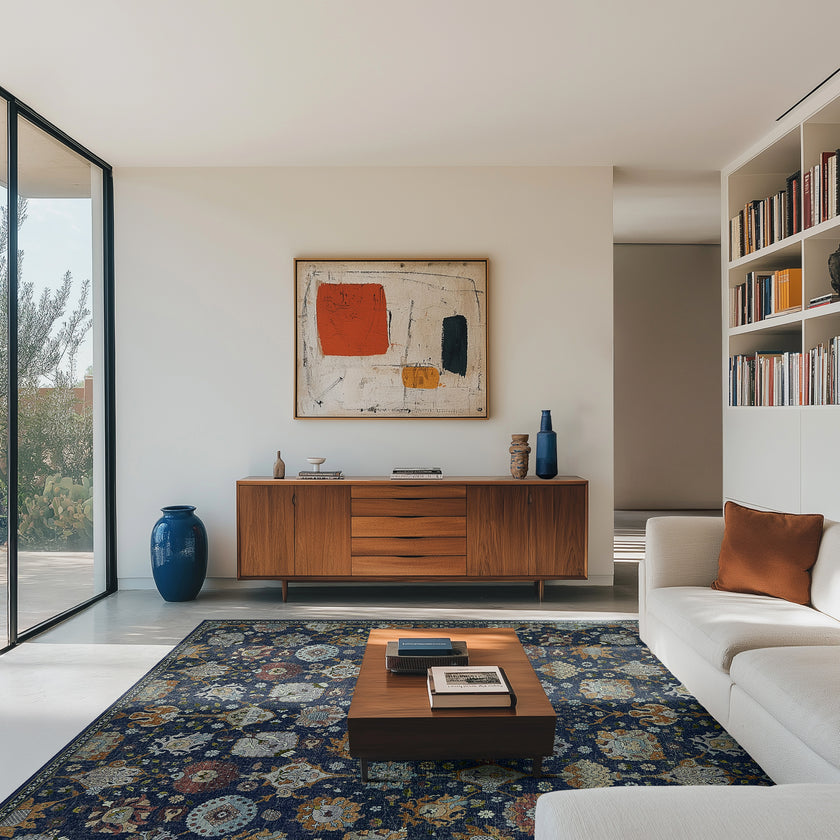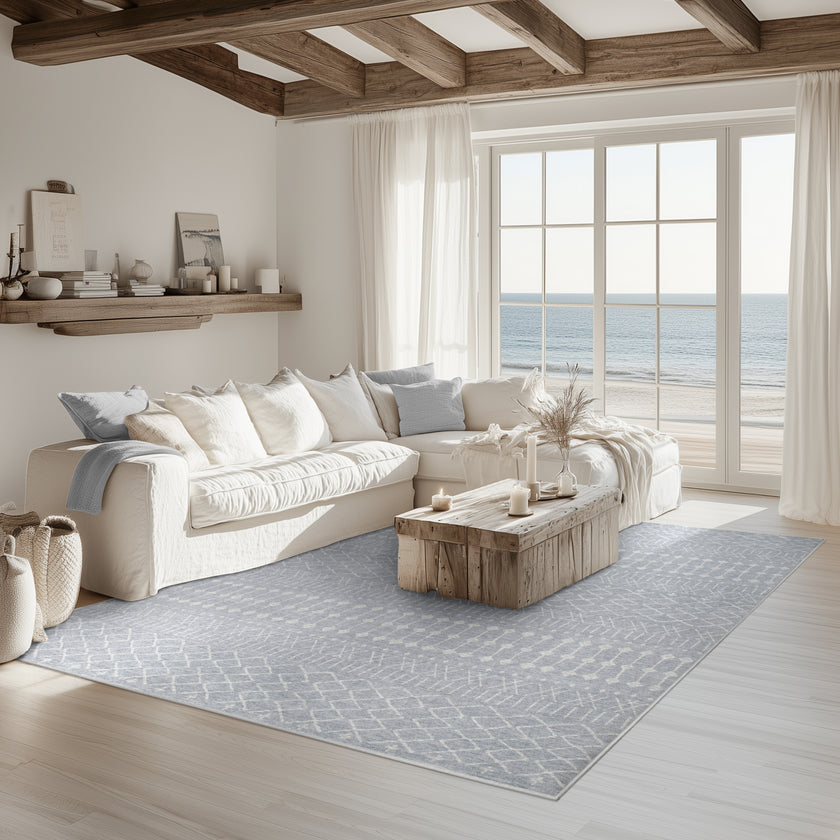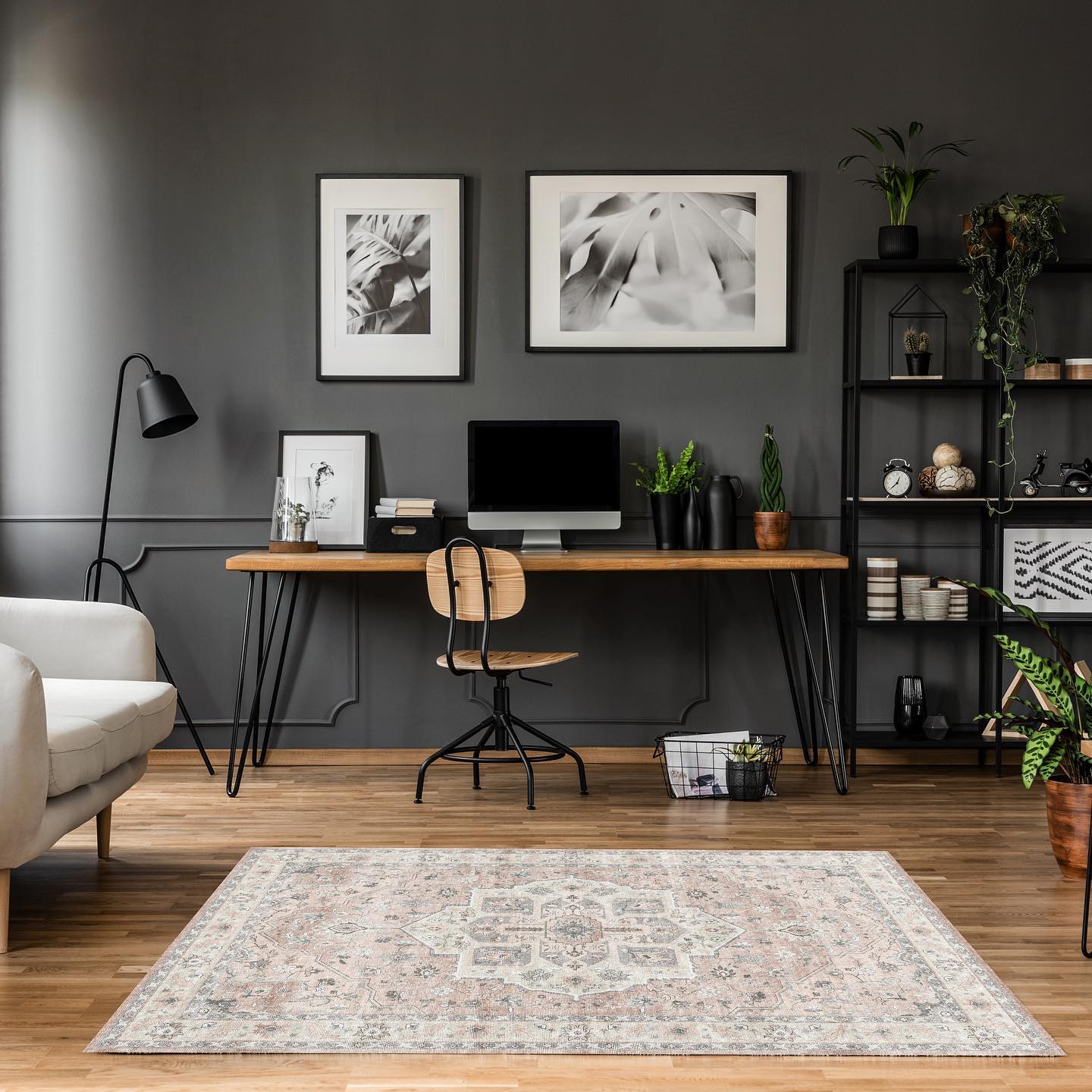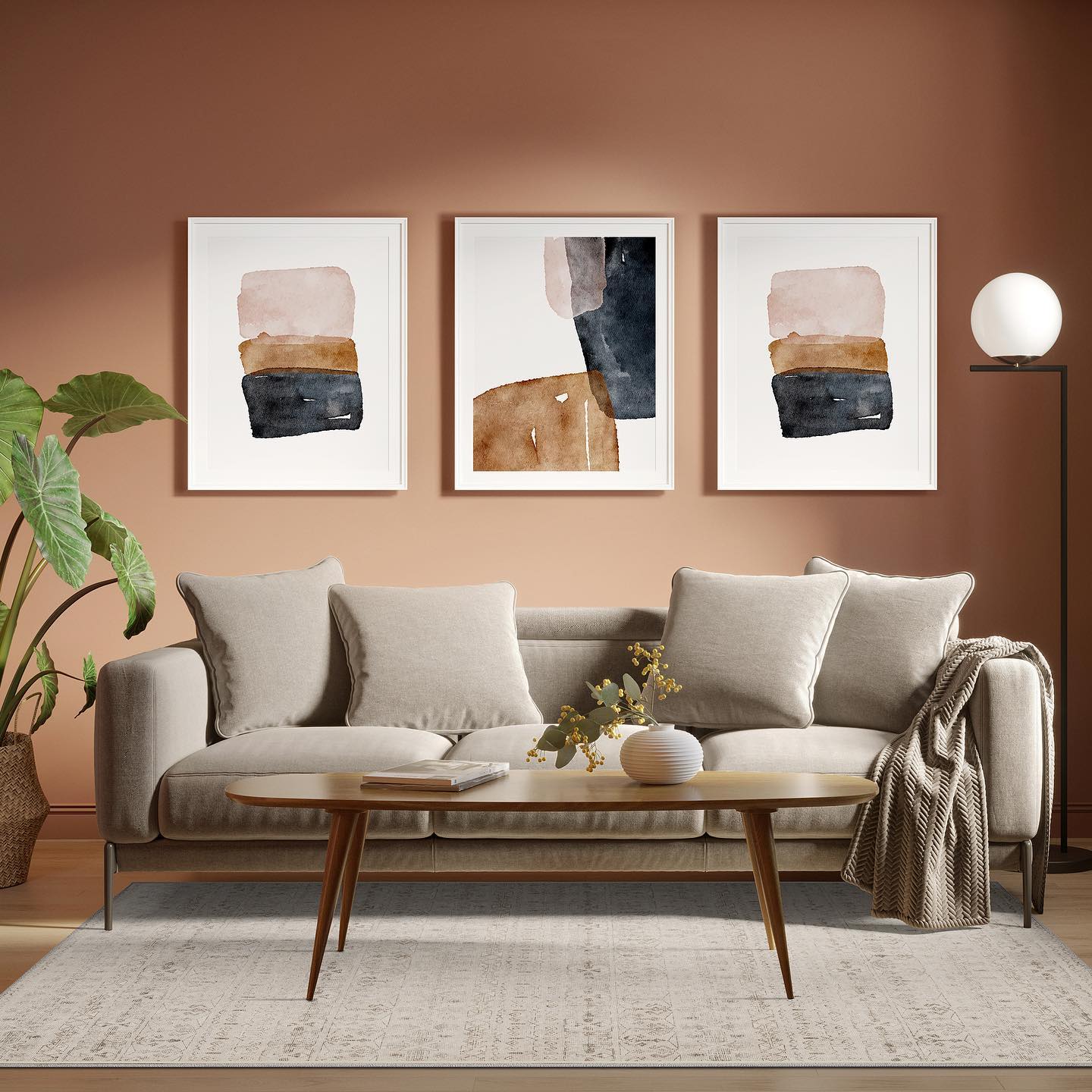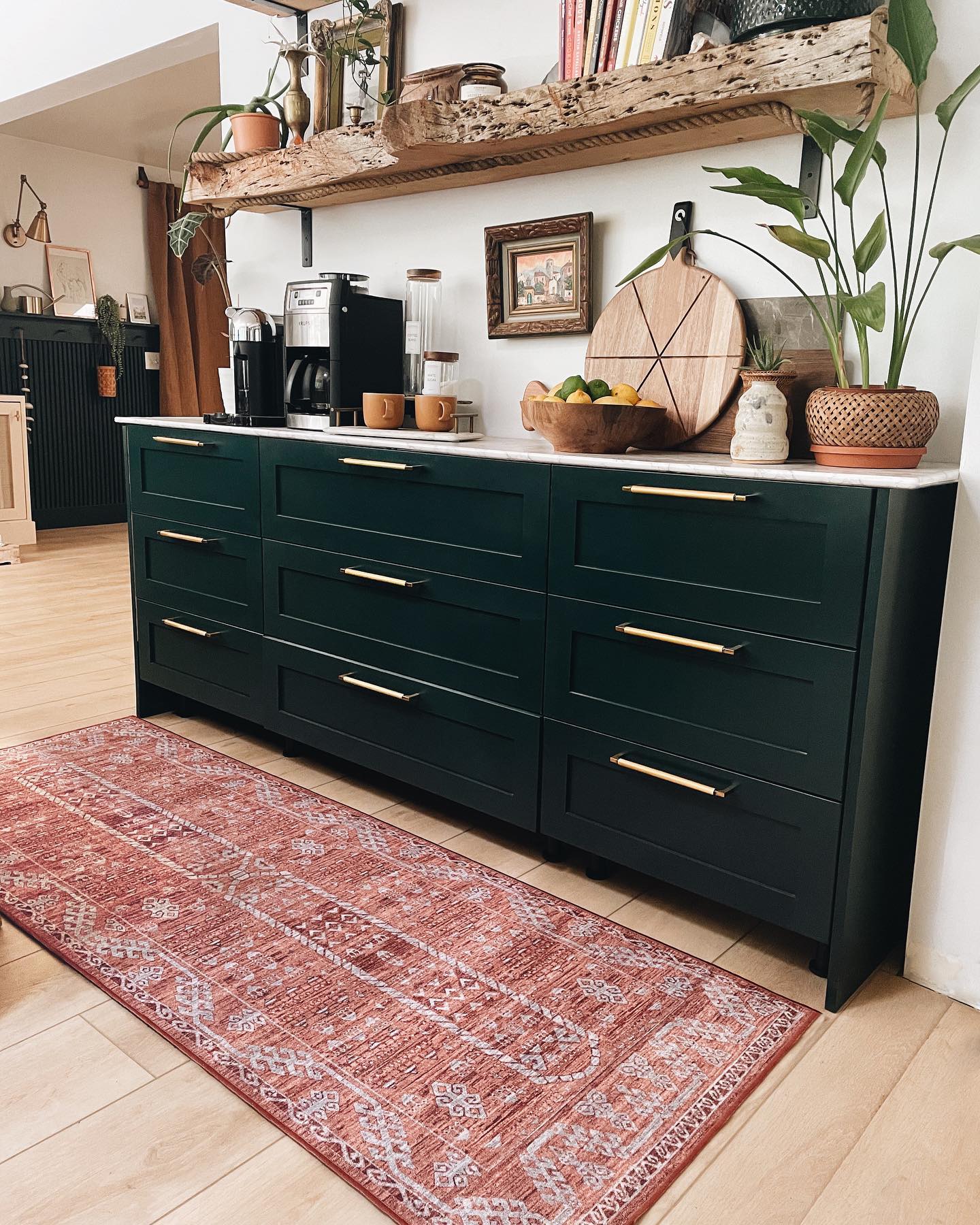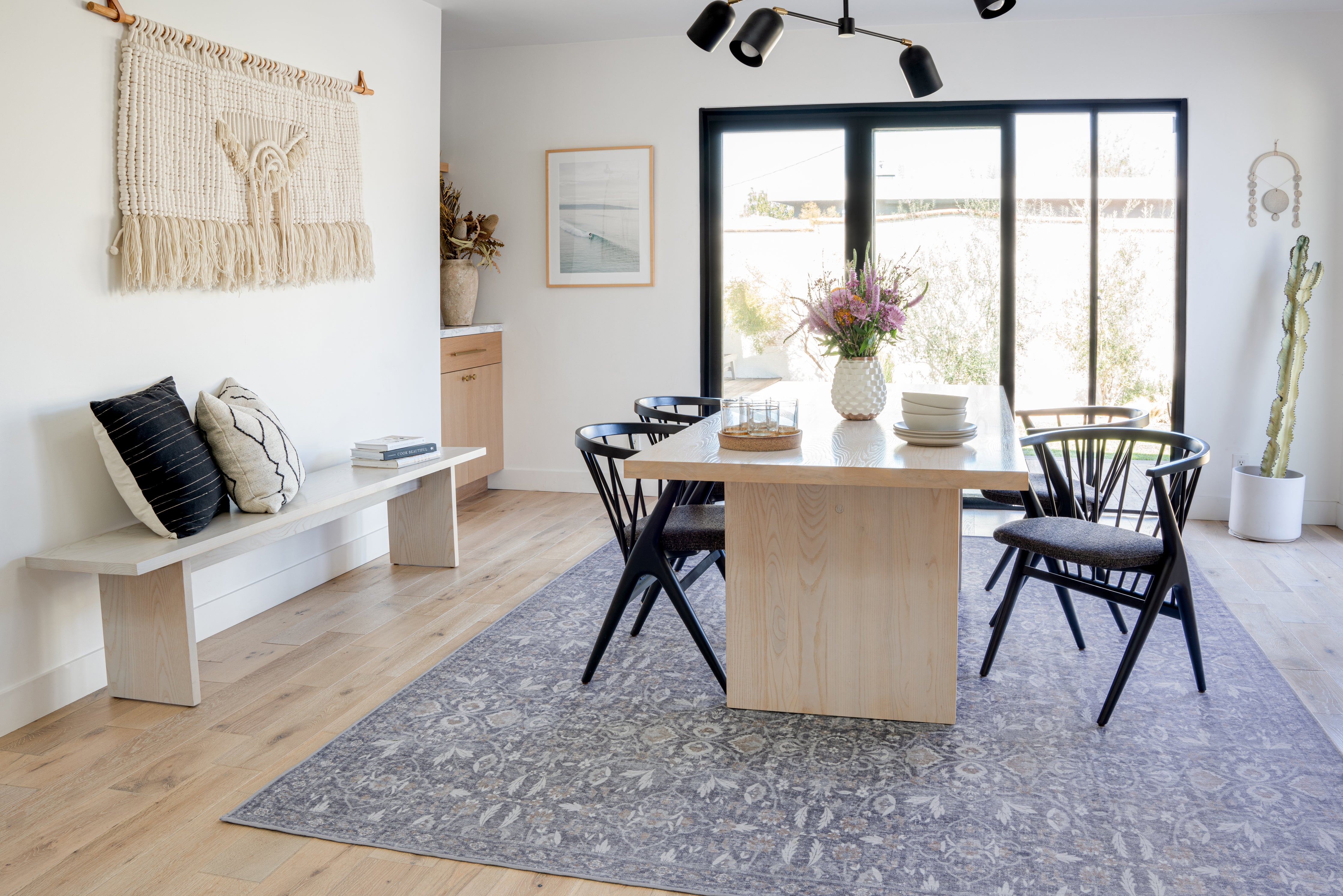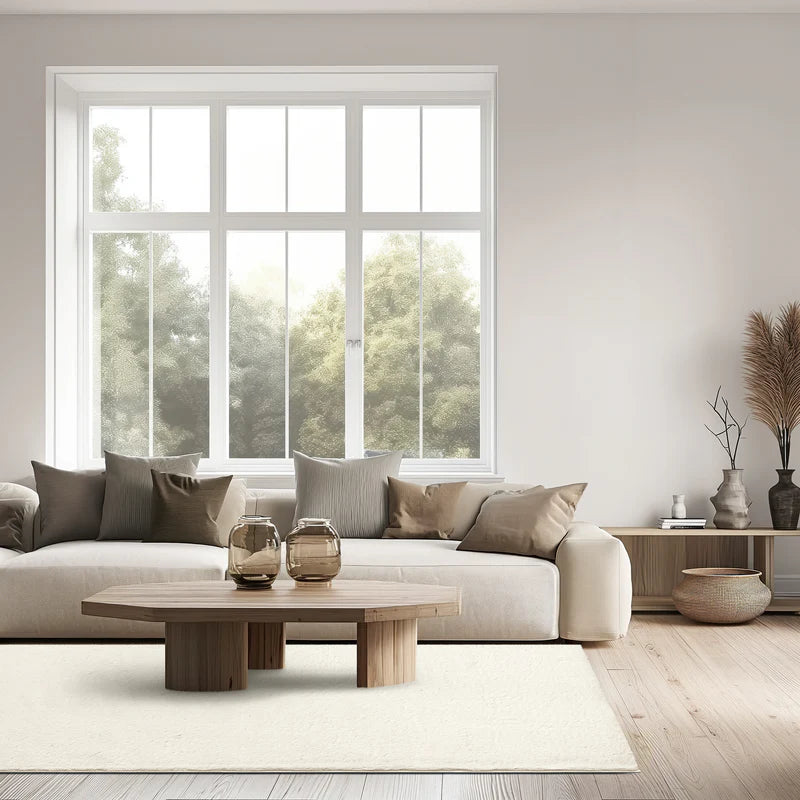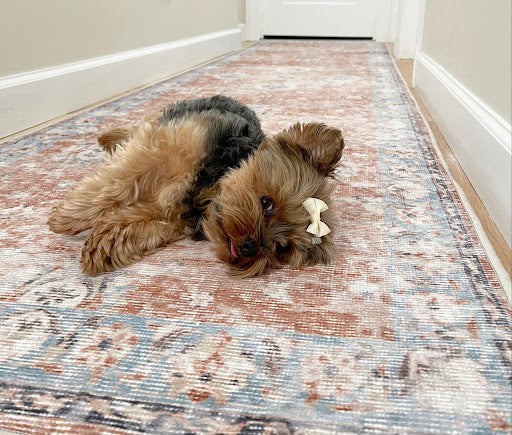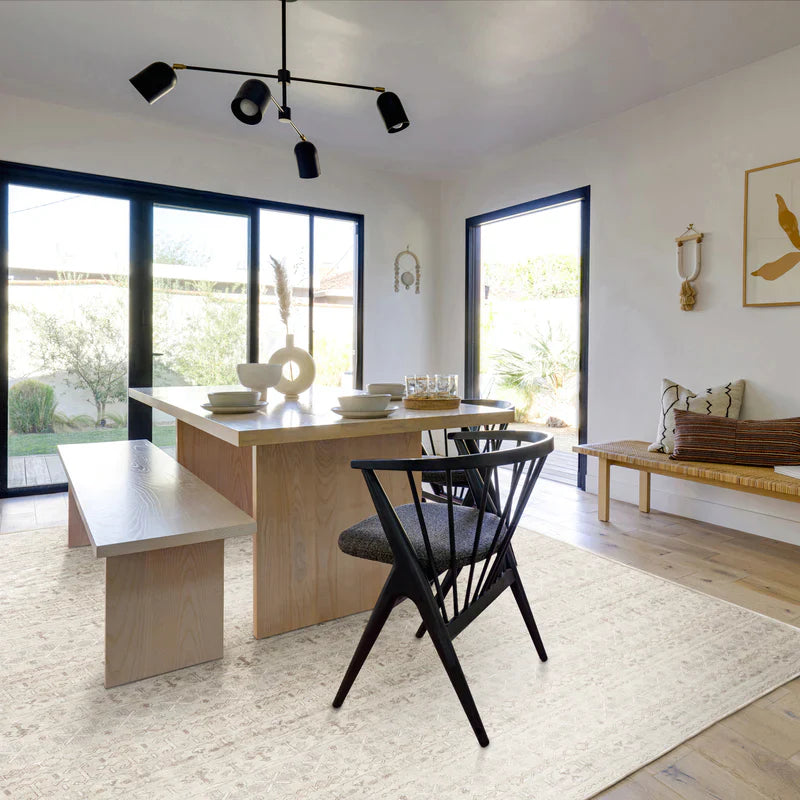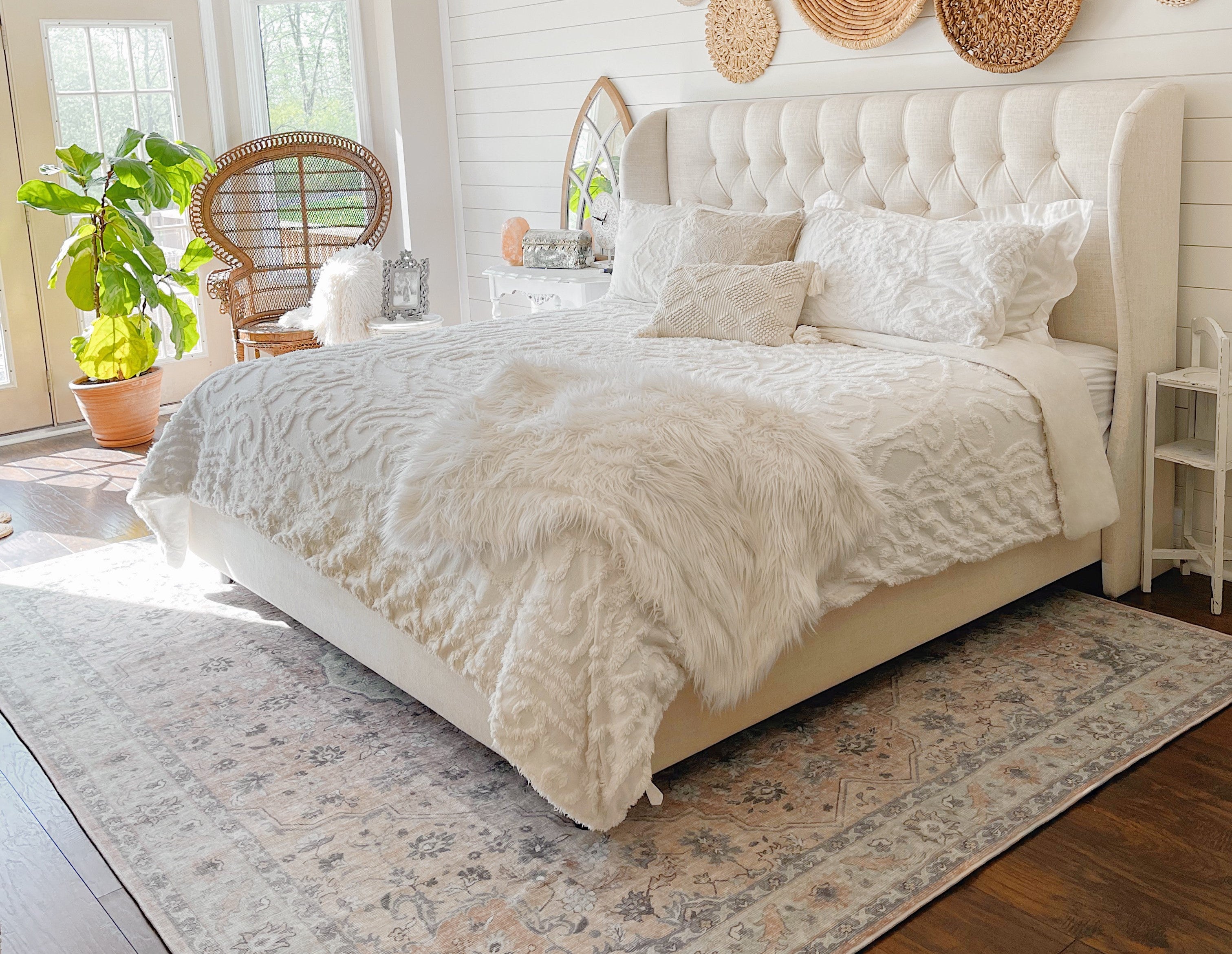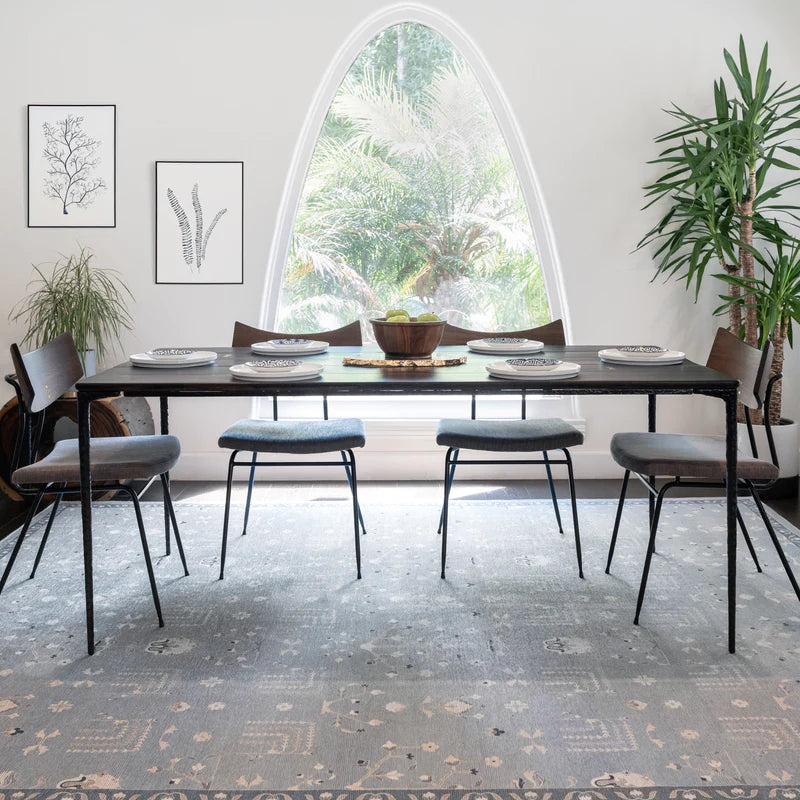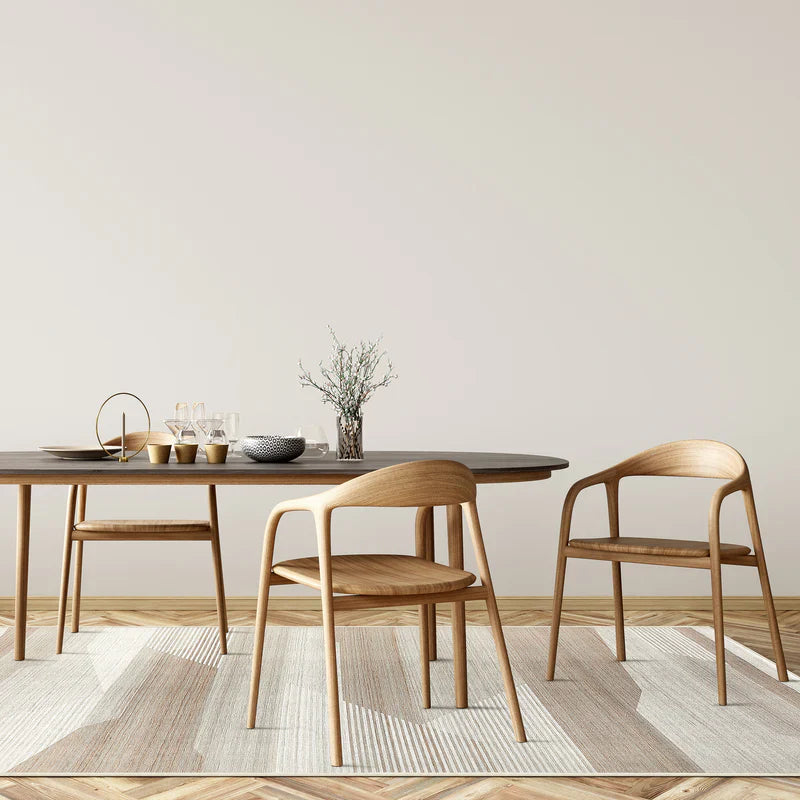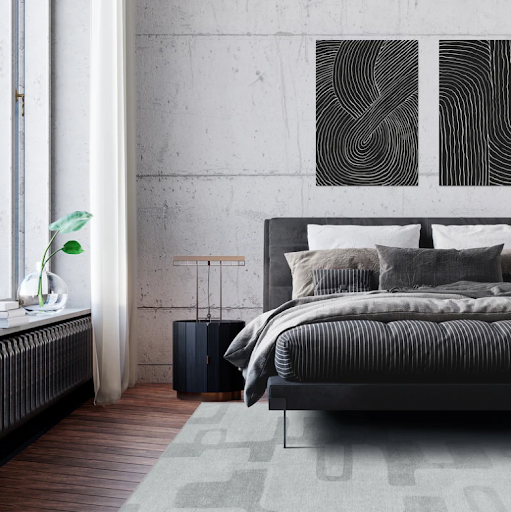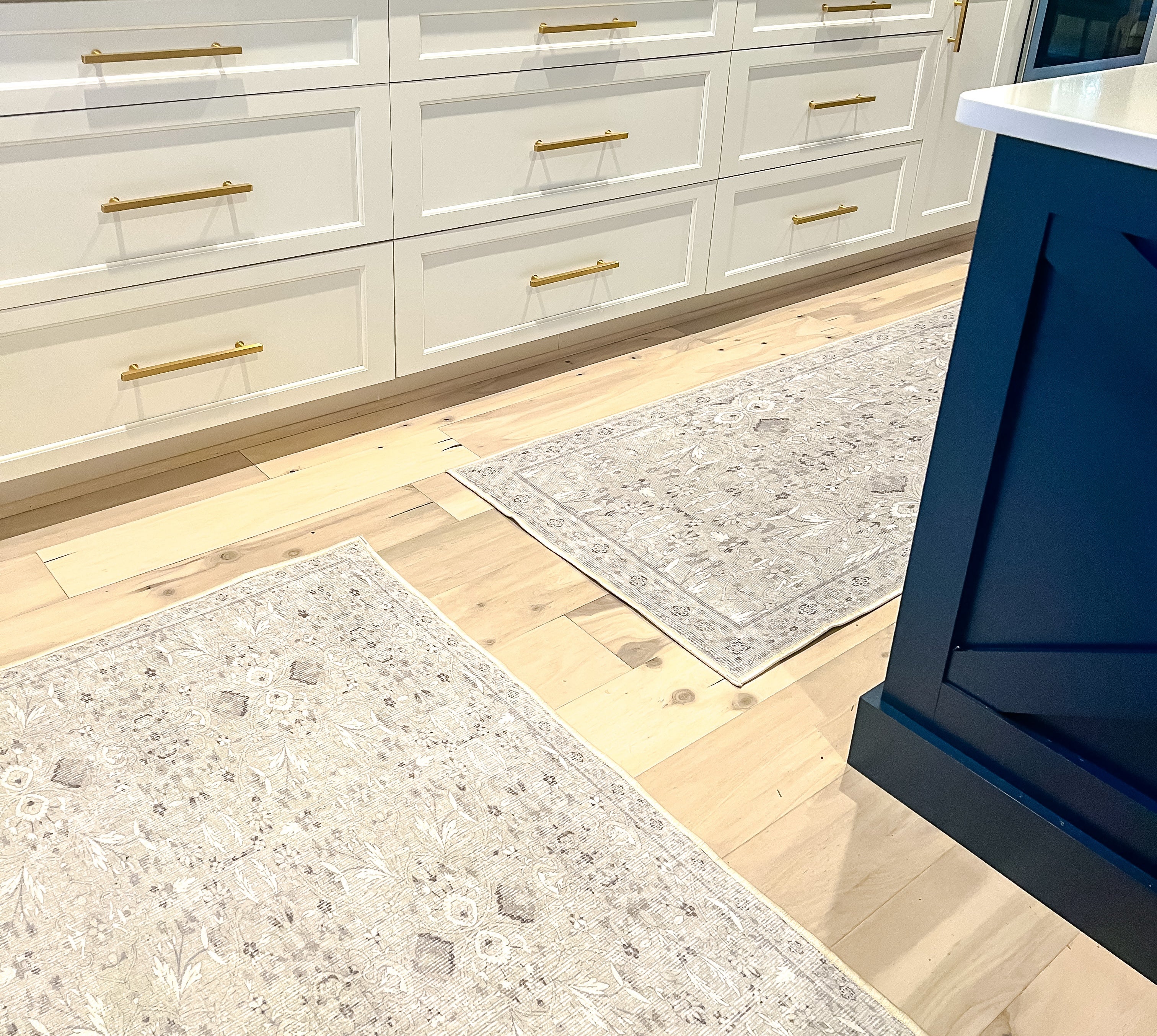Tumble’s Definitive Guide to Choosing a Persian Rug
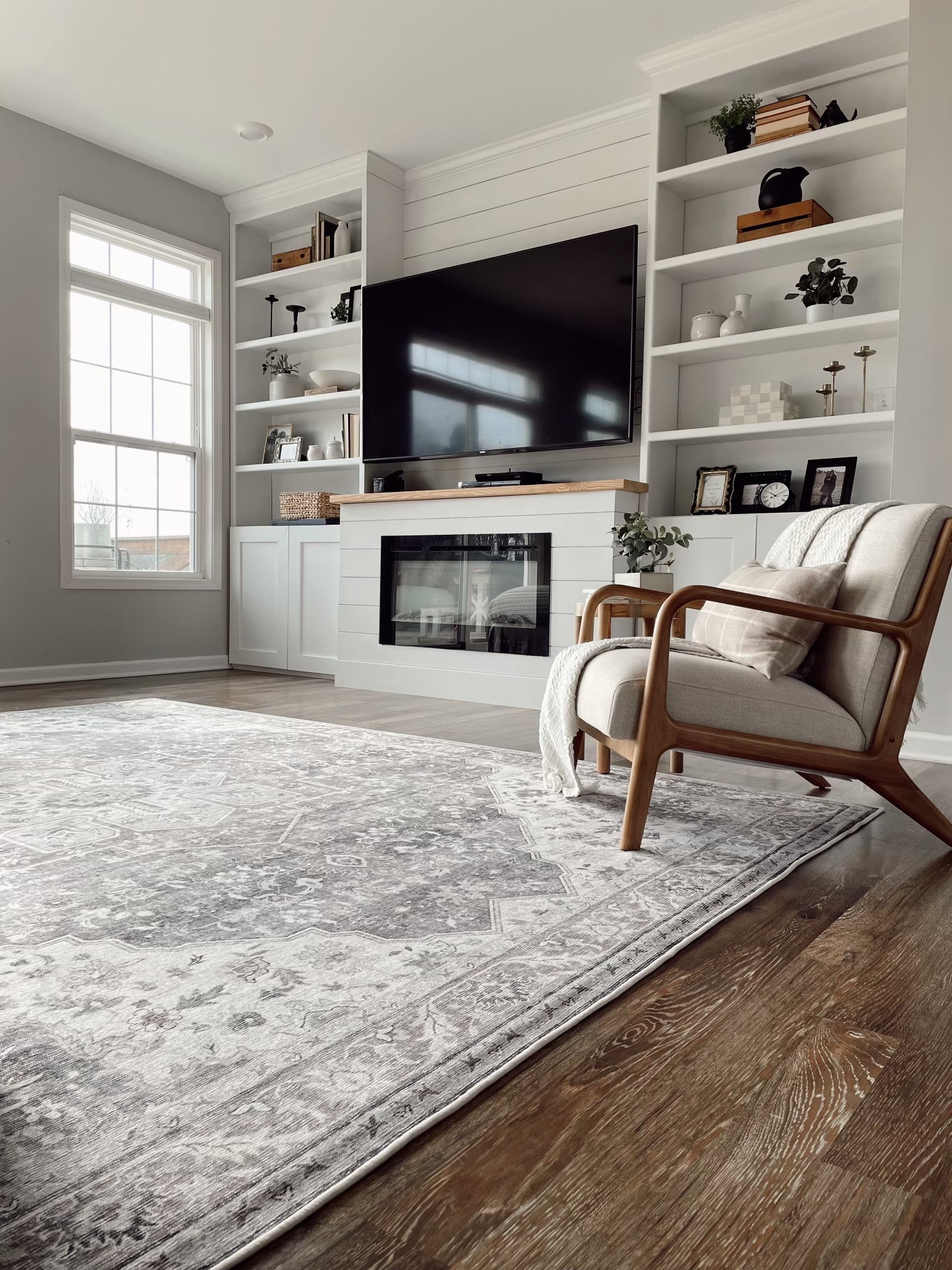
If you’re looking to add an area rug to your space, few options loom quite as large as a Persian rug. Persian area rugs are ubiquitously known and pretty universally admired. They add color — often thanks to high-quality natural dyes — texture, and an amount of class that is hard to replicate.
Even if you’re not familiar with Persian carpets, you’d probably recognize one if you saw it. They’re the prototype for anything you’d file under the category of “antique rugs”. An actual rug from Persia — modern-day Iran — tends to be high-quality, handwoven with an impressive knot count, and designed with a motif that features a large, intricate medallion in the center, and smaller, more intricate designs around the edges.
The patterns of Iranian rugs, as well as oriental rugs from Tibet, Turkey, Nepal, Pakistan, and Afghanistan, can vary, of course, but the uniting factor is that they’re beautiful, versatile, and highly coveted. But if you’re considering adding a Persian rug to your space, what do you actually need to think about to get the perfect rug for your space? Does it need to be an antique Persian rug, or are there more contemporary options that will fit the brief?
Let’s break down what to look for in your Persian rug, and how to choose the best option for your space.
What Is a Persian Rug?
Persian rugs have become fairly ubiquitous when it comes to traditional or even transitional home decor, but they have a long, rich history in Iran. Traditionally, Persian rugs are handcrafted works of art, hand-tufted by weavers, and are created from local materials. That said, we often refer to all sorts of similarly-patterned rugs as Persian, while some may actually be Moroccan or Turkish, where there’s a strong Persian presence.
Most Persian and similar oriental carpets are made from natural materials. These are often wool rugs, as well as silk or cotton. Modern rugs in the oriental tradition come in bright colors as well as more muted tones, and the patterns and geometric designs are often as symbolic as they are beautiful, although the exact symbolism can vary with the rug’s origin.
Some cities have distinctive patterns associated with their rugs, from the more traditional elaborate designs from Kashan, Tabriz, Heriz, Kerman, Serapi, Bakhtiari, Nain, and Bidjar to the more tribal looks of Gabbeh and Kilim. It’s worth getting to know the different styles so you can be more specific as you narrow down your search.
What Should You Consider?
When it comes to choosing a Persian rug, there are many factors to consider. Whether you’re looking for a Persian rug to round out the home decor in your living room or think it’s the perfect option to give your bedroom that cozy, handmade feel, there are a number of decisions you’ll need to make about your needs and tastes before you choose one.
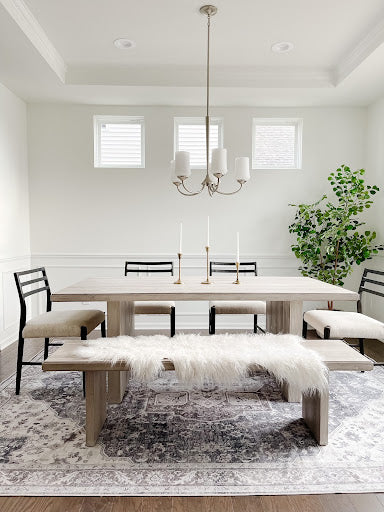
The Pattern
As we mentioned above, there’s a wide variety of rug styles when it comes to Persian rugs, so it’s worth getting to know the different terms and regional specialties. Do you want something bold and busy like our Amara Rug, or something more subtle and restrained, like our Shiraz Rug?
Once you’ve found the type of pattern that most appeals to you, you can move on to the next consideration.
The Palette
Choosing the right color palette for your space can be challenging. You could choose a color that complements your current decor, a color that matches it entirely, or go for something bold and mismatched to create a bold, boho vibe.
A true Persian rug comes in a wide variety of colors, so you have a lot of options. If you’re after something vintage, however, you’re likely to find that most rugs have somewhat faded colors due to their age. This isn’t a problem, really, but it’s worth considering if that’s a look you want or if you’d be better suited to something newer.
The Price
A Persian rug is a worthy investment piece if you’re looking for the sort of handmade Persian rug that will become a family heirloom. Handmade rugs are expensive, however, so if this is what you’re after, you’ll probably have to drop a serious chunk of change — even if you buy it vintage or secondhand.
If your budget is more restrained, there are more affordable options that have the look you’re after without breaking the bank. Our Hali Rug, for instance, has the look of a Persian rug, but even if you choose the largest size (8x10’), it costs only $379 — a fraction of the price you might pay for a similar rug size from another producer.

The Durability
While a vintage or brand new rug may be calling to you, you’ll need to really firmly consider the durability of your new piece. Particularly if you’re placing it in a high traffic area like your living room, or in an area prone to spills like your dining room, you’ll want to be sure you have a plan to keep it clean. Even a top-quality rug can only handle so much foot traffic.
Handmade rugs will likely need a professional cleaning every so often to be sure your rug stays looking its best. This can be almost as expensive as the rug itself, depending on its size, so be sure you’re ready for that commitment. It’s also important not to assume you can skip out on cleanings to save some money — dirty carpets can contribute negatively to the air quality of your home.
On the other hand, you could choose a Tumble Rug in a Persian or traditional style. Tumble rugs are machine washable, which means whenever your rug is starting to look a bit dirty, you can wash it in the comfort of your own home. They’re also spillproof, so even if you’re a dinner party host extraordinaire, you can have your Persian-style rug in your dining room without fear.

In Conclusion
Choosing a rug for your space can be daunting. There are so many options available to you, and it can be challenging to narrow down your choices and figure out what’s going to be best for your space and your lifestyle.
Often, choosing a vintage style like a Persian rug can be prohibitive if you have children, pets, or are just generally worried about staining your rug — or are simply wary of the high price tag that comes with professional cleanings.
Luckily, Tumble rugs offer the same style and glamor we associate with Persian rugs with a fraction of the price tag.
And not only that, but Tumble rugs are washable, so you can keep them looking fresher, longer. If you want to get the style you want without having to tiptoe around your area rug, a Persian-style area rug is the one for you.
Sources:
An Object History of the Persian Carpet | JSTOR Daily
